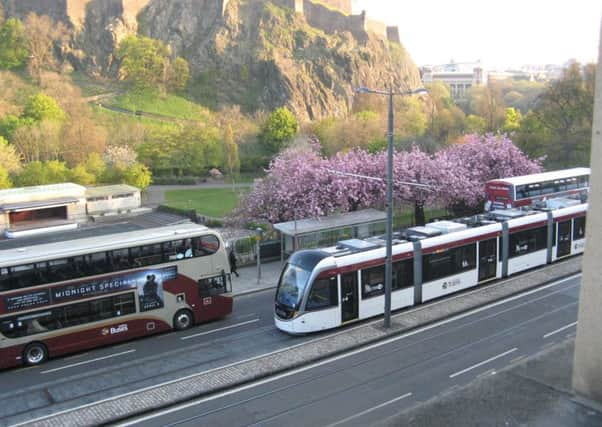Rail is on the up, but buses still struggle


Pedestrians are helped when wheeled traffic is curtailed by being taken out of town centre streets, or at least slowed down.
More 20mph limits are appearing in urban situations, especially near schools, but there is still a reluctance to enforce the 1835 law, still in force, which says that driving or parking on a footway is an offence.
Advertisement
Hide AdAdvertisement
Hide AdSome cyclists, particularly young ones, appear to think they can ride their bikes at any speed on footways because they have not been educated in what the law says and infringements are ignored. Some footways are permitted for use by cyclists, but they are clearly signed and there are strict rules.
Cyclists in cities have a bad reputation for ignoring the rules of the road, with some seeming to believe the rules do not apply to them, while in rural towns there is often a total lack of provision for them. The cycle lane across the ‘new bridge’ in Berwick is apparently almost unique in Northumberland and the Scottish Borders, and it suffers from inadequate signage.
Cars are everybody’s favourite form of transport, but the success of manufacturers in raising the level of car ownership is self-defeating if congestion results in limiting people’s ability to go where and when they want. We are coming back to the old joke about a pedestrian being a motorist who has found somewhere to park.
The diminishing number of buses is mentioned when political representatives take up the case of people who are dependent on them. Buses in rural areas are rarely commercial, and local authorities have diminishing resources so are often unable to keep them going.
Advertisement
Hide AdAdvertisement
Hide AdTaxis are readily available in towns, but become expensive if required for trips to and from rural areas. Initiatives such as Berwickshire Wheels help to provide a solution.
A huge number of railway services were closed in a very short time 50 years ago, but some are making a comeback. The speed this happens bears no comparison with the rapidity with which they closed, and it takes years of work to achieve success. The cost of restoration also far exceeds the savings that were made at the time of closure.
To reopen a station there has to be evidence of need and demand. These two are often confused, but a value has to be put on need and demand has to be assessed. The one thing which has proved to be almost universally true is that actual demand far exceeds the estimate. The Borders Railway, in common with most reopened railways, reached its expected annual number of passengers in just a few months.
In the case of Reston station, the cost of extending the Edinburgh to Dunbar trains to Berwick will be greater than the revenue from Reston and their share of revenue at Berwick. Timing local services in between the InterCity fast trains will be critical, and arrangements for terminating at Berwick will add further complications.
Advertisement
Hide AdAdvertisement
Hide AdThe best hope is for local services right through from Newcastle to Edinburgh, and at long last RAGES, which campaigns for improved rail services in South East Scotland, and SENRUG, which does the same for South East Northumberland, are linking their campaigns.
The number of passengers projected for Reston is small, but the actual number using the station will be far greater than estimates.
This is only demand. Need is another question, but there are hopeful signs that the campaigners are pushing for this to be addressed.
John Wylde is the author of Integrated Transport – a Will-o’- the-wisp? priced at £14.95, post paid and signed. Also Experiments in Public Transport Operation, at £11.95. Order at www.john-wylde.co.uk